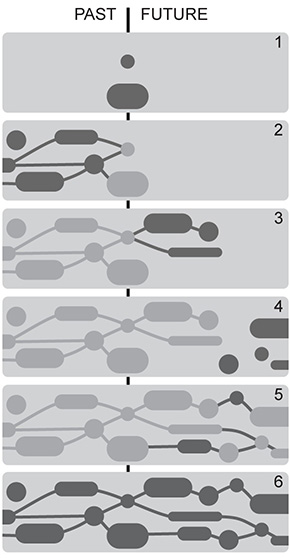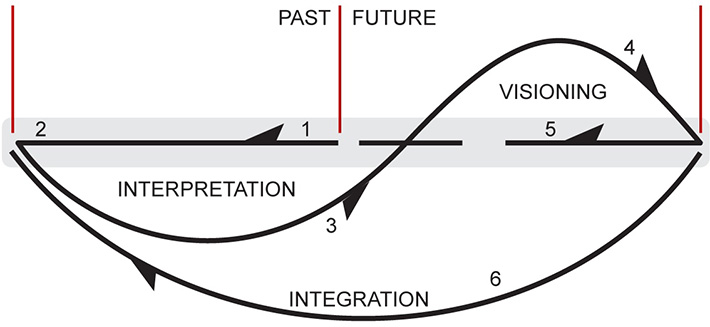The Innovation Mapping process
The review of methods (See PhD chapter 8) shows that there are many methods which seek to explore alternatives but they do so in conceptually different ways. For example, the analytical interpretation not only concerns how to reach lower levels but also the dimensions that are being deepened. The Causal Layered Analysis emphasizes underlying paradigms as the cause of change and continuity, while the Iceberg model investigates the dynamics of relations between elements. Another possibility is to analyse power structures and the social constructions which shape configurations of actors and the discourse on different phenomena. Few scholars and practitioners reflect upon the underlying assumptions of their particular methods and scopes of application, which only adds to the confusion.
My aim is to develop a methodological framework to create an innovation map which focuses on a specific situation, so in the following I will put together a methodology for suited for this particular purpose.
Main concept
Both the analytical and value-based approaches contain important aspects in relation to the overall ambition to explore alternatives. However, there is no unifying theory on how to integrate these elements into a coherent whole combining the best of both. Dennis List (2005) has for example put together a comprehensive framework with the aim of creating a ‘scenario network’, but it lacks the value-based component. There are also examples of models which, to a certain degree, integrate the analytical and visionary components into a single model, such as the VIP approach or Theory U, but they do not bring out the full potential of both approaches.
There are no fundamental incompatibilities between the two approaches, but when combining the two approaches, their individual characteristics should be considered. Most importantly they address different horizons of the radical change. The analytical approach builds on an understanding of the present and is best suited for the near future, which to a large extent is confined to the present structures and emerging developments. The value-based approach assumes a very different mindset which is open to radical change on a large scale and a belief that the future may be shaped by intervention. This level of change usually extends into the far future.
It follows that each approach is suitable for exploring different domains of change in the innovation map, but that they should be executed in series to make the best of each approach. Given their particular capabilities to enlighten different aspects of the possible and desirable, their union may provide an even stronger foundation for the innovation map. Furthermore, it can be argued that the value-based visioning should follow the analytical interpretation so that the visioning can build on the extrapolation of the present into the near future and emerging issues can be revealed in the process.
Extrapolation and Backcasting
In order to provide a comprehensive and transparent innovation map, the development of the near future and visions for the far future need to be connected to form a coherent whole. This is achieved by using two common techniques in future studies: extrapolation and backcasting.

Extrapolation extends the development of the near future as far as possible into the future, while backcasting traces far future visions back to the present. Herein, it may be observed that multiple trajectories lead to the same goal. There is naturally a limit to the distance that either technique is able to reach in either direction. The idea is that they should meet midway and integrate seamlessly so that there is coherent insight across all horizons.
The four basic elements of the overall process are shown in above figure. Even though there is no formal convention, it seems natural to depict the process of analysis as going downwards towards ‘underlying’ patterns, while the search for values can be depicted as going upwards towards ‘higher’ levels of abstraction and meaning.

The sequence of the basic elements leads to the following processes:
- 1. Unfolding and population of the present
- 2. Tracking the evolution of the relevant key aspects back in time
- 3. Interpretation of change and forecasting of the near-future
- 4. Clarification of values and visioning of desirable future situations
- 5. Connecting the forecasting of the near future with the desirable future situation
- 6. Integration across all domains
The overall process is illustrated below with different levels of abstraction and as an unfolding of the manifest level in the figure to the right. The final step takes into account that it may be useful to revisit and integrate the domains in an iterative process, but the step does not constitute a novel element in itself.
The above-mentioned framework assumes that the starting point is defined as an area of investigation in the present. Not all assignments come in this format. When the assignment is defined as a future area with no immediate relation to the present, it may be useful to start with the visioning process in step four and gradually investigate how those visions are related to the present.

Extract from PhD thesis “Everyday-Oriented Innovation” p.87